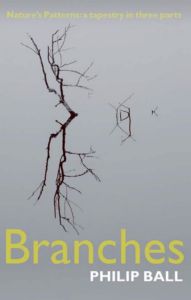Patterns are everywhere in nature--in the ranks of clouds in the sky, the stripes of an angelfish, the arrangement of petals in flowers. Where does this order and regularity come from? As Philip Ball reveals in Nature's Patterns: A Tapestry in Three Parts, this order creates itself. The patterns we see come from self-organization. Indeed, scientists have found that there is a pattern-forming tendency inherent in the basic structure and processes of nature, whether living or non-living, so that from a few simple themes, and the repetition of simple rules, endless beautiful variations can arise. Many patterns in nature show a branching form - trees, river deltas, blood vessels, lightning, the cracks that form in the glazing of pots. These networks share a peculiar geometry, finding a compromise between disorder and determinism, though some, like the hexagonal snowflake or the stones of the Devil's Causeway fall into a rigidly ordered structure. Branching networks are found at every level in biology - from the single cell to the ecosystem. Human-made networks too can come to share the same features, and if they don't, then it might be profitable to make them do so: nature's patterns tend to arise from economical solutions.
In Collection
#7460
Read It:
Yes
#7460
Read It:
Yes
Chaotic behavior in systems, Pattern Formation (Biology), Pattern formation (Physical sciences)
|
|
||||||||||||||||||
